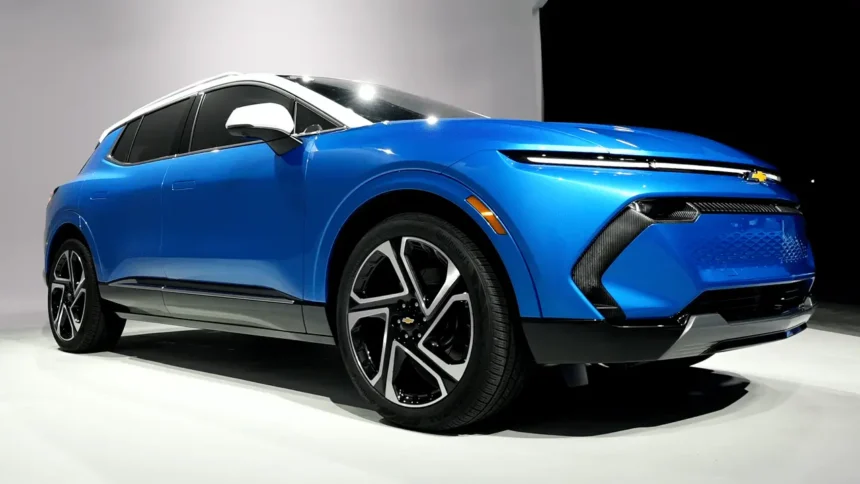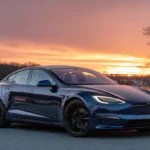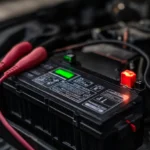Ten years after announcing its first Ultium joint venture, GM now operates full-size battery plants in Lordstown, Ohio and Spring Hill, Tennessee, each running 24 hours a day. Together they crank out roughly 5 000 cells per hour and, according to Bloomberg’s latest audit, have overtaken Tesla’s U.S. cell output—even though neither site is yet at nameplate capacity.
A third Ultium Cells facility in Lansing, Michigan is entering final equipment installation; GM expects LG Energy Solution to assume full ownership when the transaction closes in the first quarter of 2025, freeing GM capital for still more capacity. By year-end, the three-plant complex is projected to support more than one million Ultium-based vehicles annually.
2. New factories—and formats—on the way
The ink is barely dry on GM’s latest $4 billion domestic-investment announcement, which earmarks upgrades across multiple U.S. assembly plants to handle Ultium-Powered crossovers and pickups launching in 2026-27. In Indiana, a separate $3.5 billion venture with Samsung SDI will build prismatic cells—rectangular “bricks” that pack tighter and promise lighter modules—though volume production has slipped to 2027. GM managers say that shift will let them cherry-pick the most cost-effective form factor for each vehicle segment without abandoning the Ultium branding.
3. Chemistry carousel: from nickel-rich to manganese-rich (and beyond)
Behind the scenes, GM’s Wallace Battery Cell Innovation Center in Warren, Michigan is busy prototyping seven different anode-cathode combos, including silicon-enhanced, sodium-ion, and several flavors of solid-state. The headline act is lithium-manganese-rich (LMR), which the company unveiled in May and aims to commercialize for trucks and large SUVs by late-2027, with full-scale U.S. production in 2028.
LMR offers almost nickel-grade energy density at near-LFP cost, sidestepping cobalt and lowering raw-material exposure. GM engineers call it “the sweet spot”: cheap enough for mainstream models, dense enough for long-range flagships.
4. Range records that reset the bar
Chemistry innovation is already visible in showroom numbers. The Chevrolet Silverado EV Work Truck now carries an EPA rating of up to 492 miles on a single charge, eclipsing every electric pickup on sale. Over in the luxury lane, the 2025 Cadillac Escalade IQ claims 460 miles and recently completed a 421-mile San Francisco–to–Los Angeles run with charge to spare.
Not to be outdone, GMC’s Sierra EV Denali Max Range package is certified for up to 460 miles, with real-world tests logging 422 miles at a steady 70 mph. Taken together, GM now owns the range crown in both the luxury-SUV and full-size-truck categories—critical battlegrounds for American buyers.
5. Why 2025 is the pivot year
With cell throughput rivaling Tesla, multiple chemistries in the hopper, and class-leading range figures, GM’s Ultium gambit has shifted from promise to execution. Analysts say shaving another $30 per kilowatt-hour this year would drop pack costs to the psychologically important $100/kWh mark, potentially unlocking price parity with combustion models.
Regulators add tailwinds: U.S. Inflation-Reduction Act credits keep domestic cell plants financially attractive, while Canada’s clean-tech manufacturing incentives could lure a future Ultium facility north of the border. On the product side, the imminent Equinox EV and next-gen Bolt—both slated to adopt low-cost LFP packs—will test whether GM can translate its battery breakthroughs into truly mass-market affordability.
Bottom line
“GM’s Ultium Update: New Plants, New Chemistries, New Range Records” isn’t just a press-release headline; it’s a snapshot of a carmaker hitting critical mass. If the Lansing plant ramps smoothly and LMR prototypes meet cost targets, 2025 may be remembered as the year Ultium ceased to be an experiment—and became the backbone of GM’s electric era.








